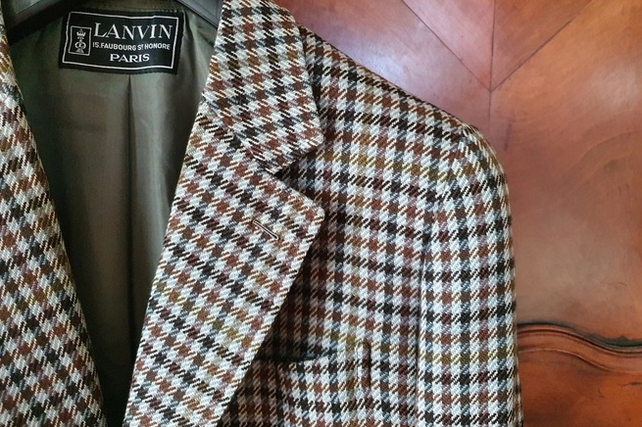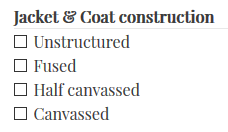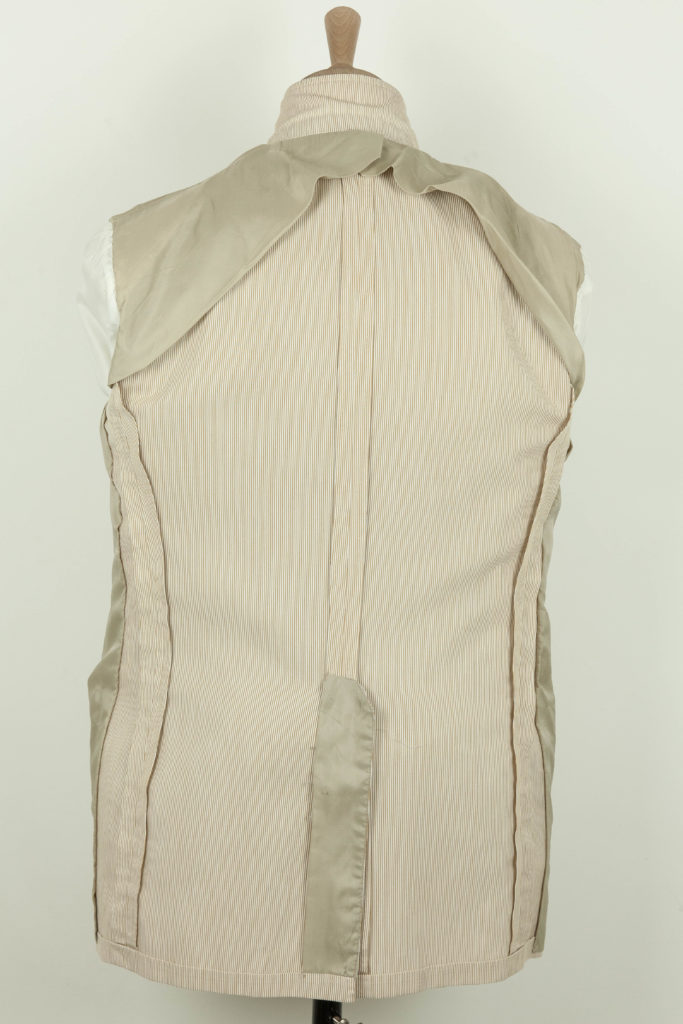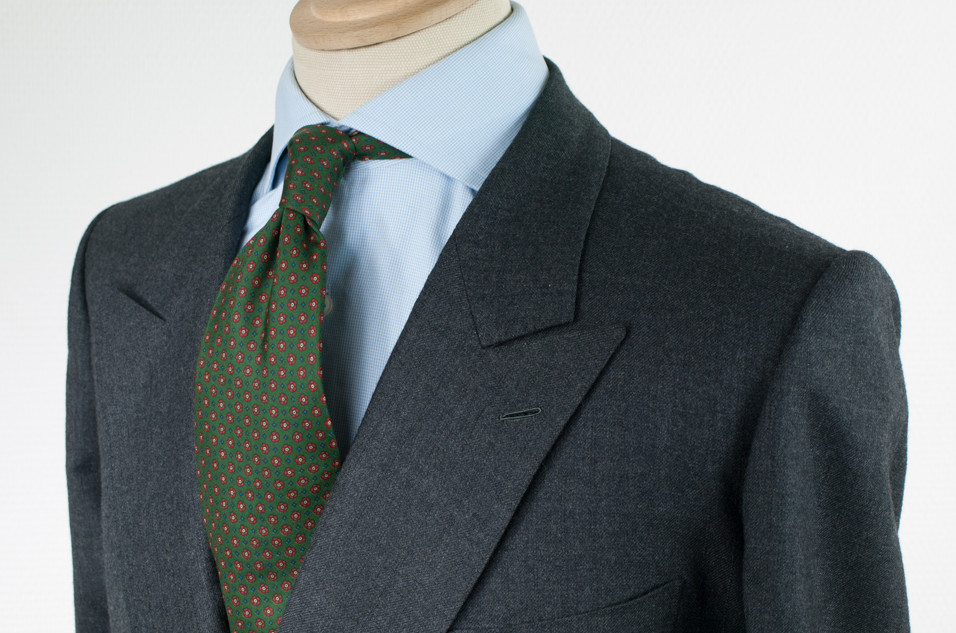
When discussing classical menswear, the terms “fused”, “half canvas” or “canvas construction” may be use a lot to describe the way a jacket or a coat is made. But what do they mean exactly? And more importantly how to tell the difference?
What does fused, half canvas and canvas construction mean?
A canvassed garment has the particularity to gain shape thanks to a canvas stitched to its lapels, chest and side tails. The composition of this canvas vary a lot from countries and sometimes workshops and tailors but it is mainly made of horse hair and natural fibers such as linen.
Until the end of the 60s classical jackets were all canvassed (some were unstructured but that is another topic), whether made by a factory or a tailor.
It is from this period of time that canvas was no longer the only way to give shape to a garment as iron-on were invented to replace canvas construction – a long and labor intensive process and thus quite costly. Iron-on, which is a piece of synthetic fabric that can fuse two distinct layers (thus the term “fused”), avoids the stitching of the canvas as it just requires to iron the fabric at high temperature where you need structure – lapels and torso. Et voilà!

However, the fuse construction does not come without drawbacks. Even if there can be a big difference between entry-level and high-end fusing, fused jackets and coats all eventually have the same fate: the glue will progressively lose its grip and “bubbles” will appear on the fabric where fusing has disappeared. This decay will be aggravated by dry cleaning or simply by wearing the garment with body heat and sweat. If worn often, a fused garment will not last more than 3-5 years!
Canvas construction, at the opposite, will hold the distance. In most cases the fabric will deteriorate before the canvas construction! It is common to find second hand canvassed garments that are 10, 20, 30 years old (sometimes much more) and can even be handed over to your children.
But wait! Canvas construction has more perks than just that its durability. The fit – canvas allows a very neat drop. Comfort – as canvas is made of natural materials it “breathes” easily where fused construction retains heat from your body.
Today, 99% of main street garments are fused and only a few makers pursue the canvas dream, mainly high-end Italian ready-to-wear, tailors and some made-to-measure workshops. The price difference can be very important between the two fabrications but in the end we are convinced that it IS worth it as you will keep the garment for a very long time.
This is partly why we created Vulpilist, a Sartorial Marketplace where you can find canvassed items AND gave the possibility to sort them by construction!

How to tell the difference between fused, half canvas and canvas construction?
Knowing if a garment is canvassed, half canvassed or fused is all about feeling what makes the garment structure. Thus, the first thing to do is pinch the tails and lapels of the jacket or coat.
Do you feel a third layer between the two layers of fabric? Something rough and rugged? This is the canvas and roughness is due to its composition (linen and horsehair).

Do you feel something soft and fluid like a plastic bag? Or, at the opposite, are you unable to move the two layers of fabroc apart? In those cases you are most probably dealing with a fused construction – the first case is rather a modern fused construction and the latter a hard fused construction common during the 70s.
Here is another tip to tell canvassed and fused apart: just look directly at it! In some cases it is possible to access directly the inner layer. This is the case when the jacket or coat bottom sewing is loose enough to see through it. It is also possible when the garment is unlined and the inner layers are easily accessibles.
Note that the canvas may be of different colors: it is traditionnaly oatmeal or cream but Italian ready to wear tend to use black canvas since the 2010s.
All those explanations are quite theoretical and cannot replace experience from touching and feeling fabrics and garments. We encourage you to make your own experience! The most affordable way of doing so it to visit second hand shops such as our marketplace Vulpilist where you can incredible sartorial deals!




